Shiliuyun-Xinjiang Daily (Reporter: Zhao Mei) news: A jackal pup wanders and forages in the Qimantag Mountains with its parents. Suddenly, a sudden noise attracts its attention. It looks at an infrared camera with curiosity, and then runs away quickly after confirming there is no danger. The image data retrieved recently from infrared cameras set in the Altun Mountains National Nature Reserve shows jackals' interesting activities.
Xu Junquan, deputy director of the Plateau Ecological Environment and Nature Protection Office of the administration of the reserve said that in these two years, with the ecological improvement of the reserve and the help of infrared cameras set in the reserve, jackals, once disappeared, have been captured acting in flocks by infrared cameras.
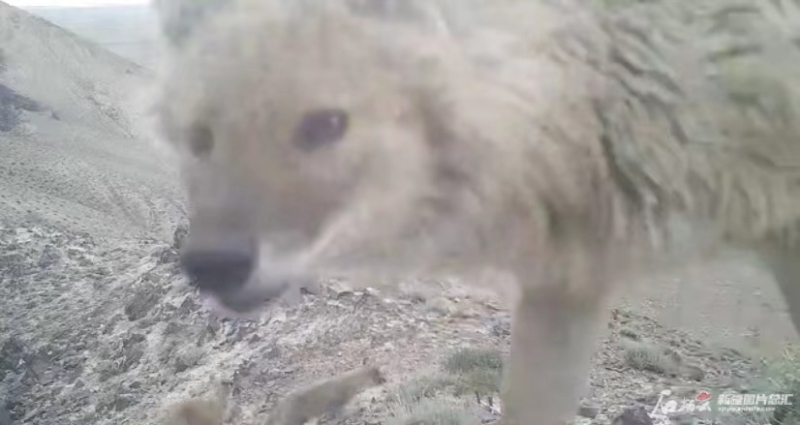
Photo shows a jackal pup looks at the infrared camera with curiosity in the Altun Mountains National Nature Reserve, northwest China’s Xinjiang. (Photo offered by the Administration of the Altun Mountains National Nature Reserve)
Jackal, also known as "jackal dog", "red-hair dog" etc. in China, is the top of the four large beasts in traditional Chinese culture -- jackal, wolf, tiger and leopard. It is also a kind of large colonial carnivore, used to be widely distributed in China. However, after 1980s, jackals' population decreased a lot and they have gradually become a rare animal. At present, jackal is listed in the IUCN (International Union for Conservation of Nature) Red List of Threatened Species and as the National First-Class Protected Animal of China. According to the estimation of IUCN, at present, there are less than 2300 adult jackals that could breed in total in the world.
“The distribution of jackals are recorded in the scientific data of the reserve, but for many years, staff have rarely witnessed them or captured their images. In recent years, infrared cameras set in the reserve enable us seeing them. Two years ago, when we saw one in video, we thought it was a fox. It had long and thick scarlet hairs, long and pointed mouth and furry big tail which is similar to a fox. But upon careful observation, more details were exposed. Its ears were shorter, mouth was less pointed and tail was smaller than fox’s. We asked for advice from many researchers and then confirmed it was a jackal," said Xu Junquan.

Jackal is bigger than fox and smaller than wolf, and is the most combative animal among canine animals. (Photo offered by the Administration of the Altun Mountains National Nature Reserve)
Since then, Xu began to pay attention to jackals. “Up to now, images of jackals wandering and foraging in valleys have been caught by 3 of 10 infrared cameras set in the Qimantag Mountains and its surrounding areas.” According to the data of infrared cameras, regardless of the fact that both jackals and wolves belong to canine animals, they have different ranges in the reserve. “The range of jackals coincides with that of snow leopards, and that of wolves coincide with Tibetan antelopes, wild yaks, Tibetan wild asses and Tibetan gazelles. Infrared cameras have not yet caught the images of jackals’ predation, and we guess that they may prey on woolly hares, snowcocks, plateau pikas, even blue sheep, argali and other animals.”
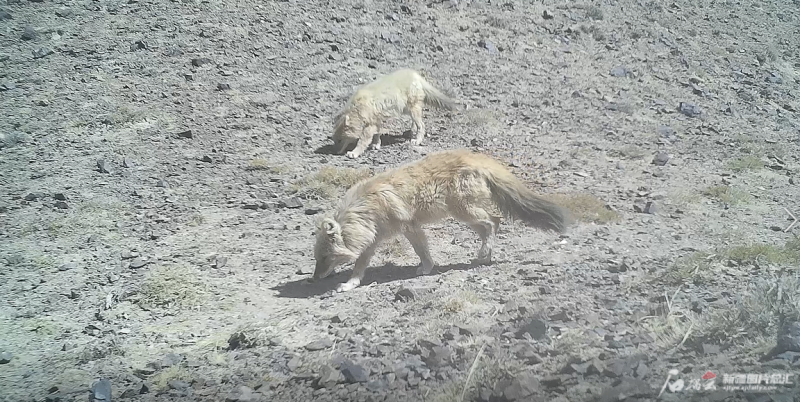
Jackals make preys on cooperative hunting. (Photo offered by the Administration of the Altun Mountains National Nature Reserve)
Jackals are canine omnivores, and their body size is between wolves and foxes, and they live in groups. They prey on various animals, ranging from small animals such as mice and rabbits to large ungulates such as elks and wild boars. Jackals’ hunting is similar to wolves’ -- they mainly run after preys closely, and siege them in mass.
According to Ma Ming, researcher of the Institute of Xinjiang Ecology and Geography of Chinese Academy of Sciences, documents inform that jackals once were widely distributed in areas around the Tianshan Mountains, the Altai Mountains, the Kunlun Mountains and other places in Xinjiang. However, for the last 10 to 20 years, they have been rarely seen. “During the decade that we researched on snow leopards in the Tianshan Mountains, the Altai Mountains and the Kunlun Mountains, etc., we only met jackals once in the Kunlun Mountains.”
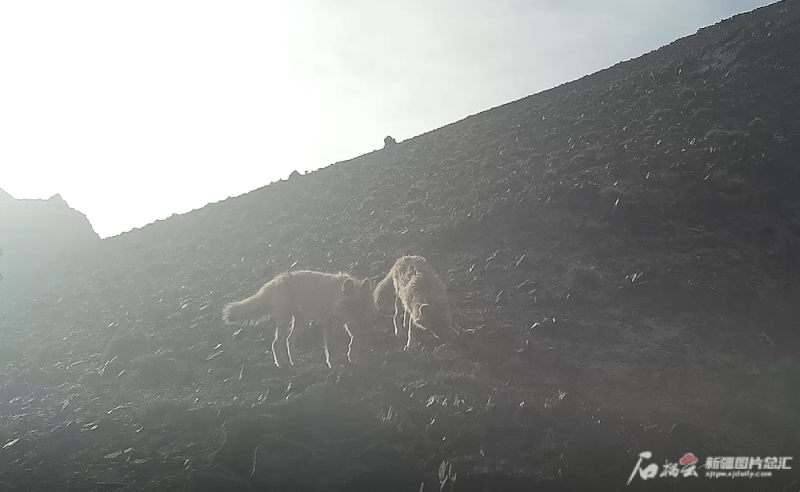
Jackals were used to be the number one maintenance of forest ecological balance in China, and had wide distribution. (Photo offered by the Administration of the Altun Mountains National Nature Reserve)
“Jackals have high demand for the environment, which requires enough preys to feed them. They are on the top of the chain, and play an important role in balancing the number of herbivores and keeping the healthy development of the ecosystem. In these two years, the images frequently captured by the infrared cameras set in the reserve have also proved its abundant biodiversity and healthy and intact ecosystem,” said Uyunbat, director and CPC deputy secretary of the Administration of the Altun Mountains National Nature Reserve.
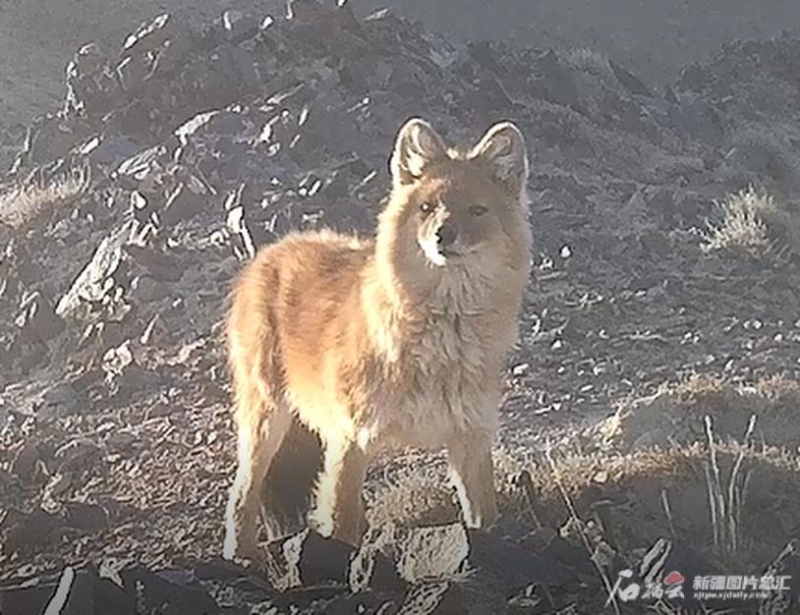
For the last 20 to 30 years, the population of jackals has dropped rapidly. Estimated by the IUCN, there are less than 2,300 adult jackals that could breed left. (Photo offered by the Administration of the Altun Mountains National Nature Reserve)
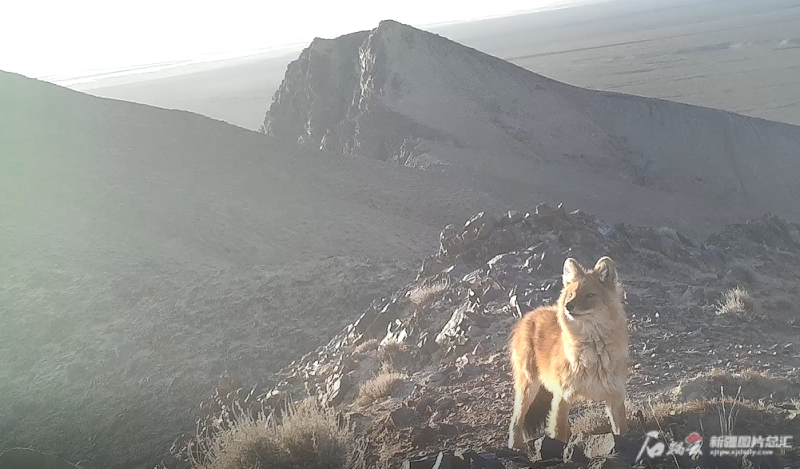
In these two years, with improving environment, jackals have often been captured by infrared cameras set in the reserve. (Photo offered by the Administration of the Altun Mountains National Nature Reserve)
(A written permission shall be obtained for reprinting, excerpting, copying and mirroring of the contents published on this website. Unauthorized aforementioned act shall be deemed an infringement, of which the actor shall be held accountable under the law.)









